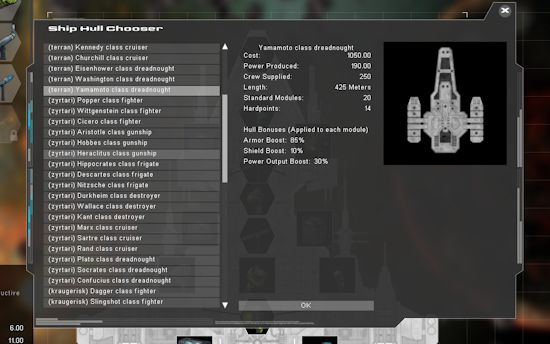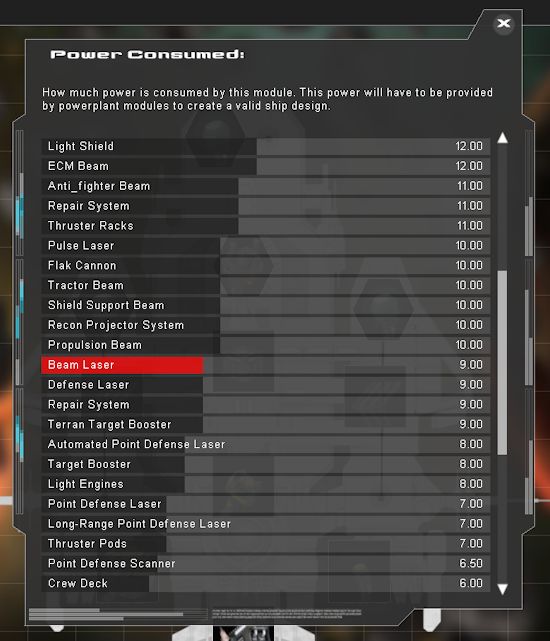So we are only a few days away from the GSB2 beta (oh yes), and I thought I’d write up a little preview about the basics of spaceship design in the game…
As you probably know Gratuitous Space Battles 2 is a game about ship design and fleet design, not really a typical real-time strategy game where you give individual instructions during a battle. As a result, what really matters is your ability to perfect a decent spaceship design, one which is efficient and effective in battle. This is harder than it sounds. In GSB2, like the original game, you select a ship ‘hull’ from a list of presets, and then equip it with modules that contains engines, weapons, defenses and other abilities…

The trick is balancing all the different attributes of a ship to get the right mix. Basically everything you select has a cost, a weight, and probably both a crew and power requirement (plus many more attributes specific to that type of module). Cost means you will be able to afford more or less of these ships in any given fleet. Heavier modules make a heavier ship, which makes them slower (which is countered by more engines…). The last two requirements (crew & power) are often the two you spend time fussing over.

Each hull in GSB2 (unlike the original game) comes with some power generation and crew supplied, but you are likely to need to add to that with extra modules. There are power and crew modules in various sizes, but getting the exact balance right, where you have enough of both, but are not wasting capacity on surplus power (wasted) or surplus crew capacity (again…wasted) can be tricky. This also leads to a lot of head scratching and chin-rubbing. You *could* add another engine, but if the engine needs more power and that demands another powerplant, then actually will the heavier weight reduce the ships speed enough to mean that the extra ‘marginal’ engine wasn’t worth it? There are a LOT of trade offs, and ship design is an art.

As well as those variables, there are also lots more, such as range, damage and tracking speed for weapons, fire interval, salvo size, fighter capacity for carrier bays and many many more. Thankfully, the game does try to make comparing it all a bit easier than it sounds, as you can click on any variable associated with a ship module and it launches a handy list to show you how it compares against other modules for that particular attribute:

This is just scratching the surface, because the choice of ship hull also affects how things turn out. Some are relatively cheap, some expensive, and many of them have bonuses (or penalties) to cost, power requirements, armor, and so on. There is no ‘best’ hull for each class, it really depends what you will be using it for? A tank, a sniper, a support ship, an anti-fighter platform? a raider?
This is a BIG part of the game. Part of the fun is fighting and winning a battle, and then working out how to do it with a cheaper ship. Every point you don’t spend on fleet cost gets transformed into ‘honor’ if you win the battle. If you beat your honor record for a mission, you earn the difference, so you can keep re-fighting a single scenario with a more and more cleverly balanced fleet to score as many points as possible.
…and of course, once you earn that honor there is the decision to make as where to spend it on the research screen. On a new hull? new weapons? new shields or engines? Or shall we be gratuitous and just spend it on a nice new decorative fin for one of our ships? :D

If you like watching huge at space battles AND the idea of studying starship blueprints to work out whether you can make your space cruiser more deadly for less cost you will be in heaven :D.
Gratuitous Space Battles 2 is still in development, although pre-orders & beta are coming at the end of this week… Tell your friends! (and warn your enemies…)